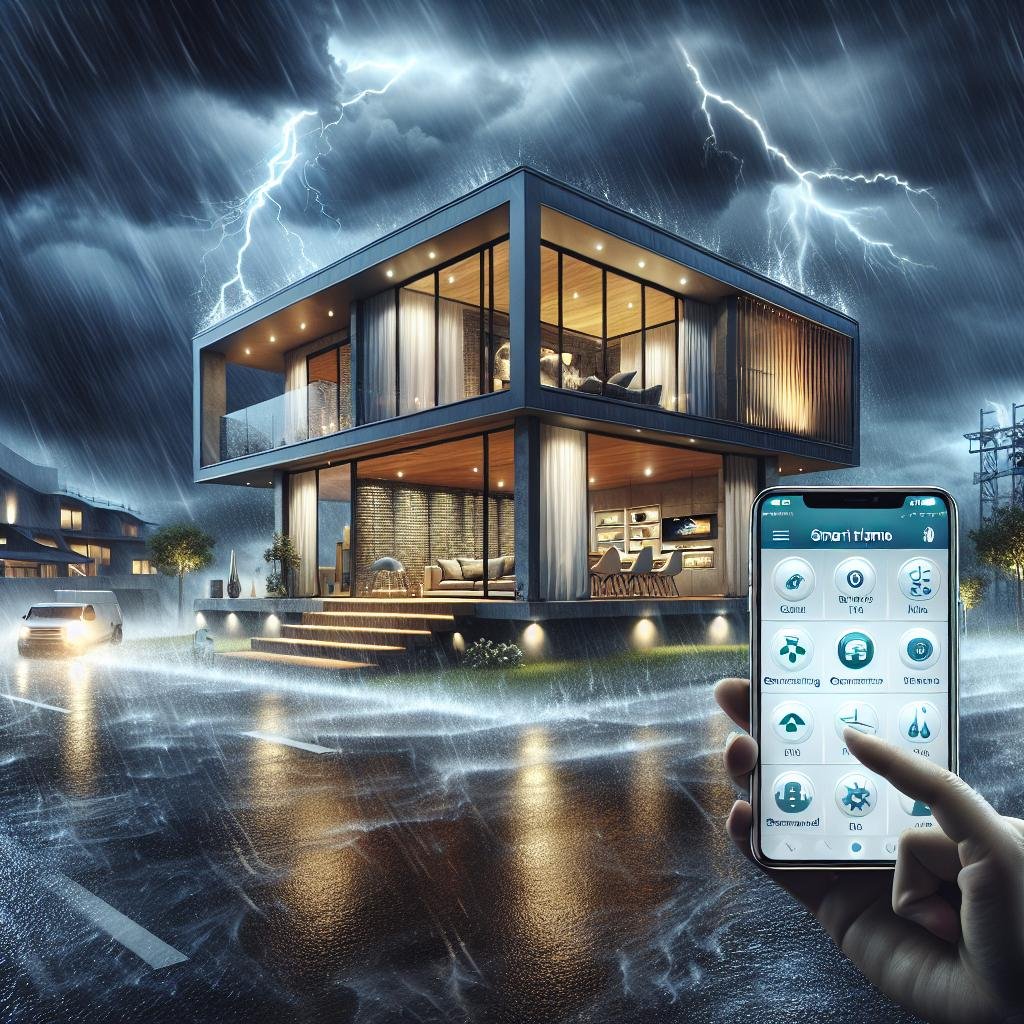
Protecting Your Smart Home from Harsh Weather Conditions
Smart home devices make life more convenient, secure, and efficient. However, harsh weather conditions like rain, snow, and freezing temperatures can pose serious risks to your smart security cameras, doorbells, and other outdoor gadgets. Without proper protection, extreme weather can damage electronics, disrupt connectivity, and reduce their overall lifespan.
Whether you’re a smart home beginner or an advanced user, taking proactive steps to safeguard your devices is essential. In this guide, we’ll cover seven must-know tips to keep your smart home tech running smoothly—even in bad weather.
- Individual Control of 2 IN 1 Outlets: 2 AC outlets are working and controlled independently.15A/1875W Max for each. Wate…
- Voice & Remote Control: Add voice control to any outdoor outlet. Enjoy the hands-free convenience of controlling any out…
- Easy Set Up and Use: 2.4GHz Wi-Fi connection required. Plug in, open the Kasa app, follow the simple instructions and en…
1. Choose Weatherproof Smart Devices
Not all smart home devices are built to withstand bad weather. When purchasing outdoor smart gadgets like security cameras, sensors, and video doorbells, look for weatherproof ratings such as IP65, IP66, or IP67.
What Do These Ratings Mean?
– IP65: Protects against water jets from any direction.
– IP66: Can handle stronger jets of water.
– IP67: Offers full protection from dust and can survive temporary immersion in water.
If you’re using indoor-only devices outdoors, consider installing them under a covered porch or inside protective enclosures to prevent exposure to rain and snow.
2. Shield Devices from Snow and Rain
While some smart home devices are weather-resistant, prolonged exposure to moisture can still cause damage. Protect outdoor devices by:
- Installing protective covers or hoods over security cameras and smart doorbells.
- Positioning devices under eaves, awnings, or porches to reduce direct exposure.
- Using silicone or waterproof sealants around the edges of outdoor-mounted gadgets.
Taking these precautions can help prevent water damage and keep your devices running efficiently through rainstorms and snowstorms.
3. Use Cold-Resistant Batteries
Cold temperatures can drastically reduce battery performance in wireless smart home gadgets. If you’re using battery-operated security cameras or sensors, opt for lithium batteries instead of traditional alkaline ones.
Why Lithium Batteries?
– Better cold resistance: Lithium batteries work well in freezing temperatures, whereas alkaline batteries lose power quickly.
– Longer lifespan: You’ll replace them less often, reducing maintenance hassle.
– Consistent performance: They deliver stable power without interruptions.
For devices with rechargeable batteries, make sure to check battery levels frequently in winter and recharge them as needed.
- Creative DIY Mode: With 16 million vivid colors and 47 vibrant scene modes, Govee outdoor lights will shine your garden …
- RGBIC Lighting Effect: Set each led light bulb to a different color, showing more than one color at a time. Enhance pers…
- Music Sync Mode: Dance the night away as the outdoor lights for patio react to your songs via the integrated mic. With t…
4. Prevent Connectivity Dropouts
Cold weather can interfere with Wi-Fi signals, leading to unreliable connections for outdoor smart devices. If you notice signal drops, try these solutions:
- Move your Wi-Fi router closer to outdoor devices.
- Invest in a Wi-Fi extender or mesh network to strengthen the signal.
- Use smart hubs that connect via local radio frequencies (like Zigbee or Z-Wave) for better stability.
Strong, consistent connectivity ensures that your security cameras, outdoor lights, and smart locks function without disruption.
5. Keep Devices Free from Ice and Snow Buildup
Accumulated snow and ice can block security cameras from recording properly and even cause mechanical issues in motorized devices like smart locks or garage door openers.
How to Prevent Ice Buildup?
– Regularly brush off snow from your camera lenses and doorbell sensors.
– Apply a thin layer of anti-fog spray to prevent condensation on camera lenses.
– Use adhesive heating pads for security cameras in extremely cold regions.
Maintaining a clear view and proper functionality is crucial, especially if you rely on smart security devices to monitor your property.
6. Power Backup for Unpredictable Outages
Winter storms and heavy rain can lead to power outages, affecting the performance of your smart devices. To avoid losing access to security cameras, smart locks, and Wi-Fi routers, consider:
- Installing an uninterruptible power supply (UPS) for essential smart home devices.
- Using battery-powered alternatives for backup lighting and security systems.
- Employing a smart home generator to keep critical systems operational.
Having a backup power solution ensures your smart home remains functional even during extreme weather conditions.
- IP65 & 2K HD: Deploy your outdoor security camera with a true to its name weatherproof IP65. Pristine 4MP 2K video will …
- Starlight Sensor & Night Vision: With Starlight Sensor, images in low-light conditions will still appear crisp and high …
- Detection & Notification: Receive notifications that matter instantly thanks to the AI-powered algorithms. If there is m…
7. Regularly Inspect and Maintain Smart Devices
Routine maintenance can prevent weather-related wear and tear. Conduct regular check-ups to:
- Inspect devices for cracks or exposure to moisture.
- Ensure firmware and software updates are installed for optimal performance.
- Clean camera lenses and sensor areas to maintain clear visibility.
Being proactive about smart home maintenance will improve reliability, performance, and longevity.
Final Thoughts
Bad weather can put your smart home technology at risk, but with the right precautions, you can ensure uninterrupted functionality. By choosing weatherproof devices, shielding them from rain and snow, using reliable batteries, and maintaining connectivity, you can safeguard your investment and enjoy the benefits of a smart home year-round.
For more expert advice on smart home security and automation, explore our latest guides or check out our top recommendations for smart devices built to withstand extreme weather conditions!


